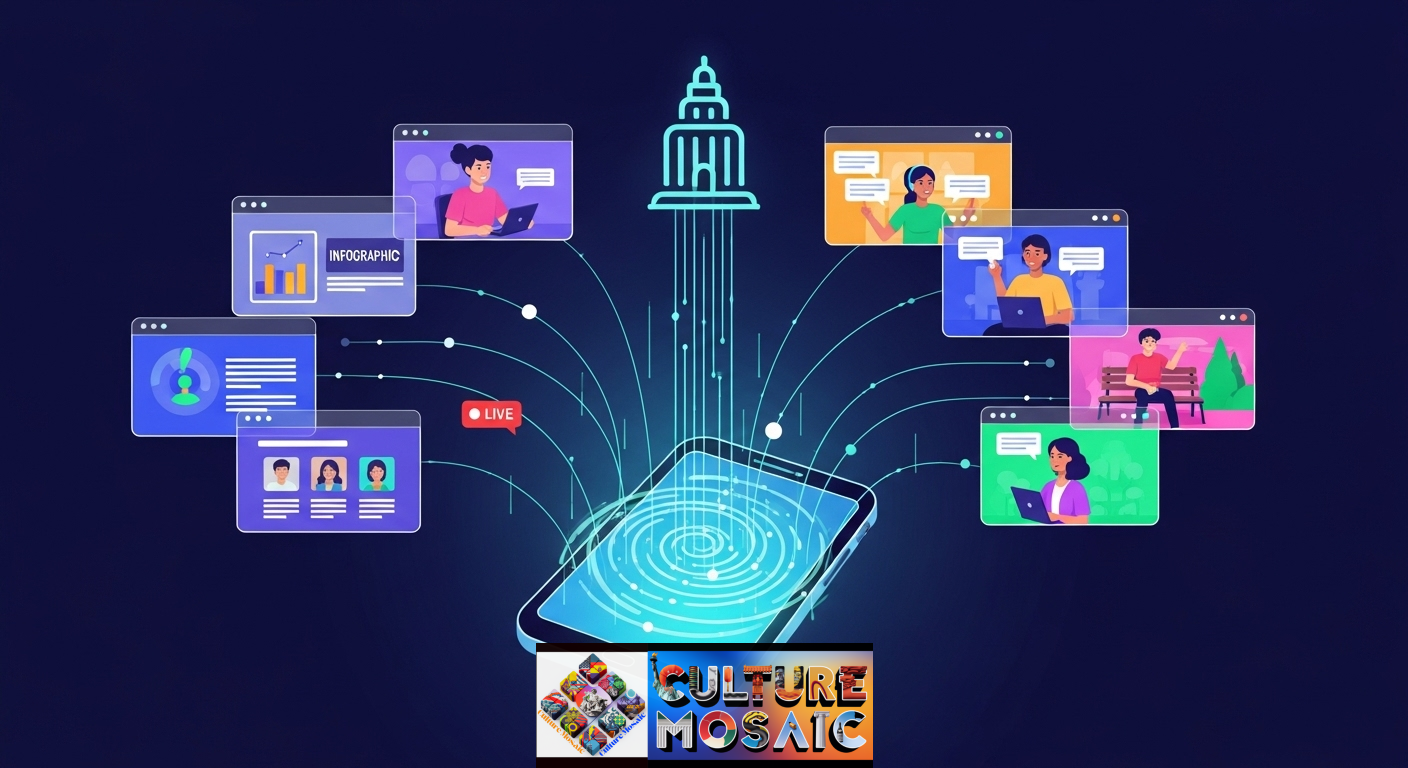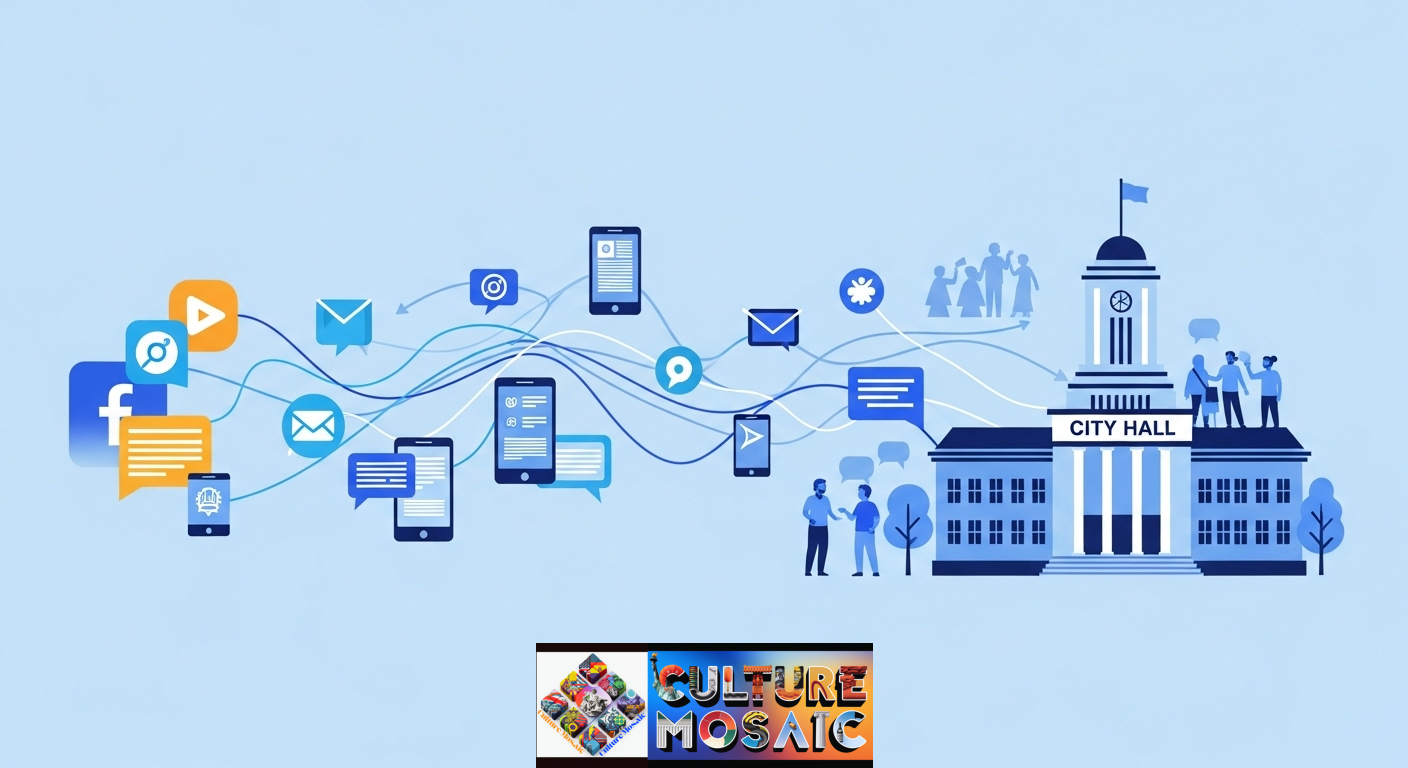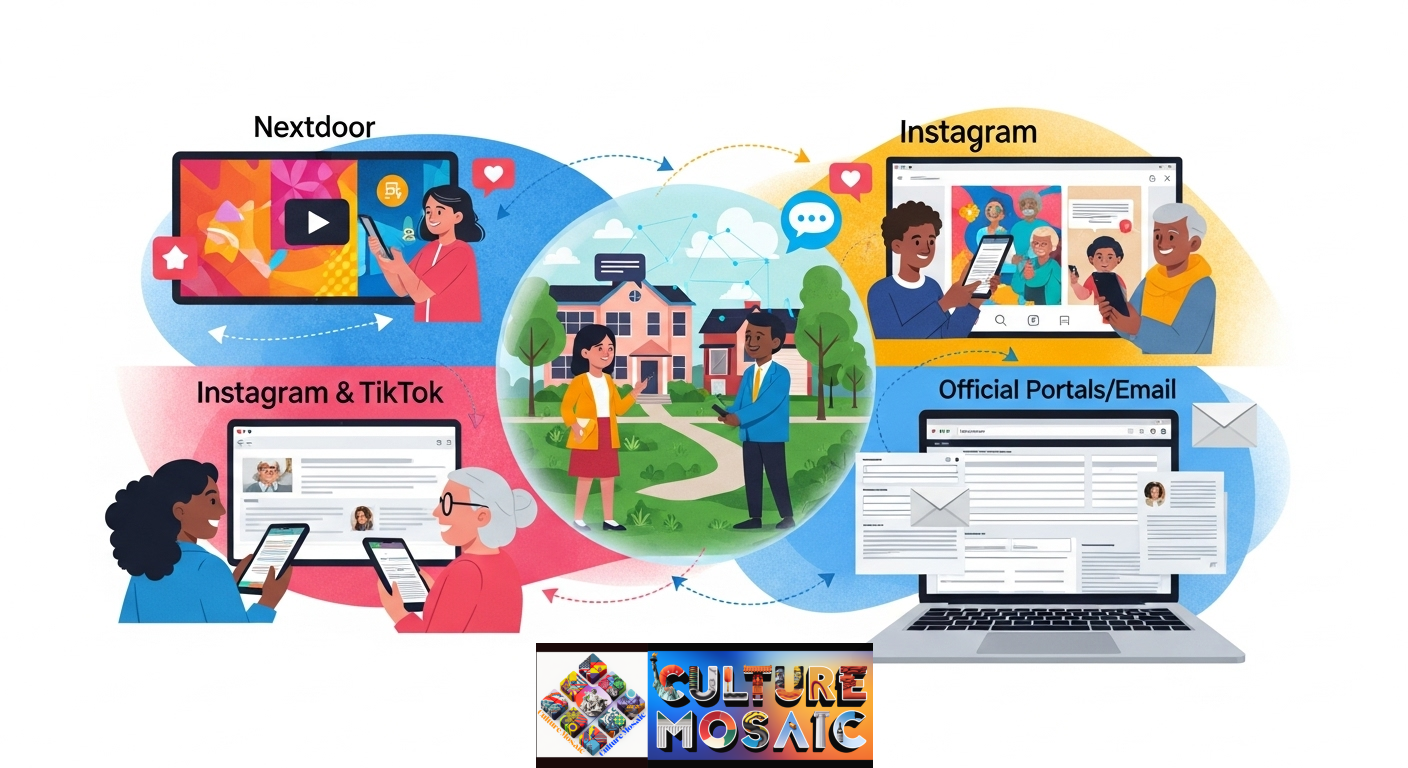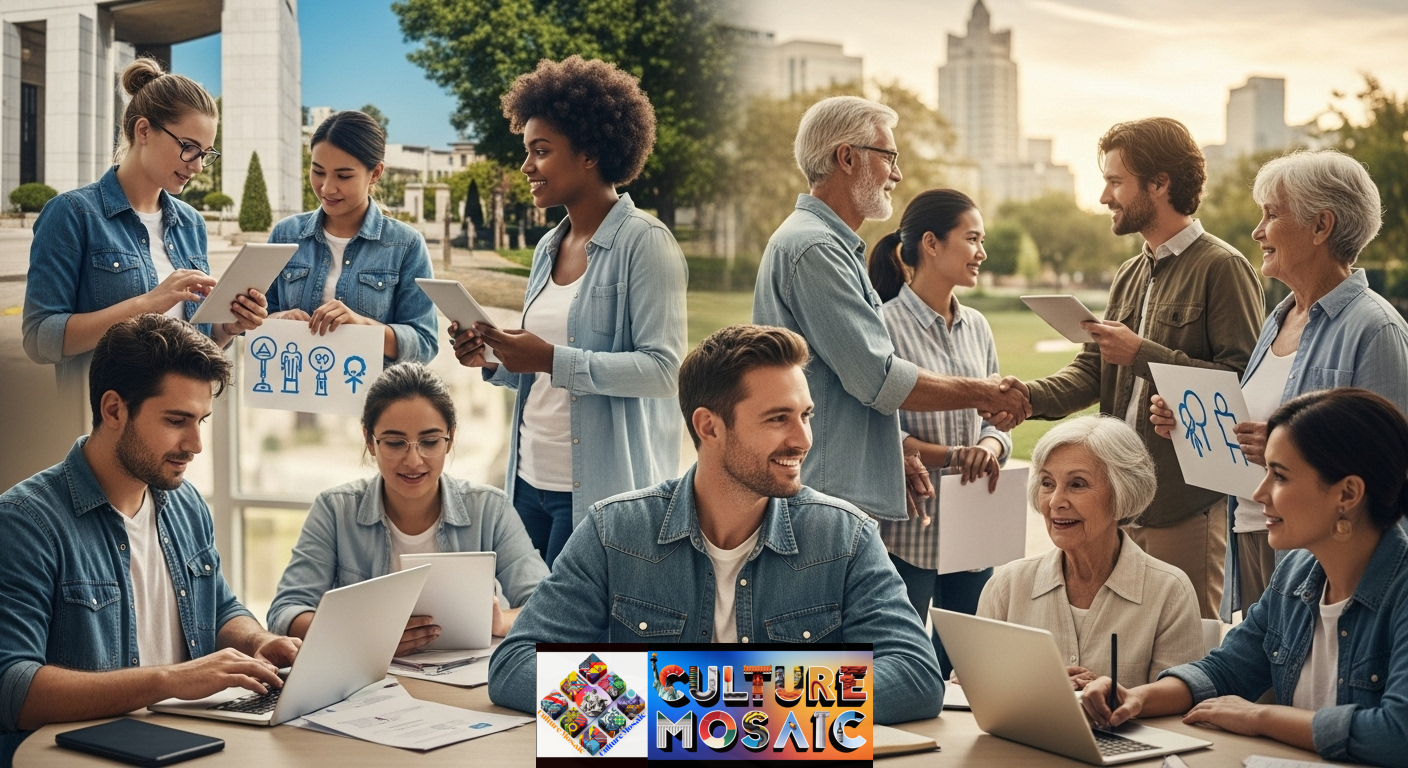In an era where a single TikTok video can reach millions in hours, the landscape of civic engagement has fundamentally transformed. Local activism—once defined by door-knocking campaigns and printed petitions—now pulses through smartphone screens, hashtags, and Instagram stories. Yet the most compelling story isn’t just about the digital shift itself. It’s about how ordinary citizens, particularly younger generations, are translating online energy into real-world policy victories at the city council level, in school board meetings, and within neighborhood associations.
This new wave of local activism demonstrates that effective civic participation doesn’t require abandoning traditional advocacy methods. Instead, it amplifies them. When a concerned resident films a three-minute explainer about a proposed zoning change and it spreads across local Facebook groups, that’s not replacing the public comment period—it’s ensuring more people know when and how to participate in it.
The Gen Z Blueprint: Organizing in the Digital Age

Generation Z has developed a distinctive approach to local activism that older civic leaders are increasingly studying and adapting. Their methodology centers on accessibility, transparency, and speed—values shaped by growing up with information at their fingertips.
Unlike previous generations who might have learned about local issues through newspaper editorials or community bulletin boards, young activists today create content that meets people where they already spend time: scrolling through social media during lunch breaks or while commuting. A college student in Austin, Texas, might break down a complex city budget proposal into a carousel of Instagram graphics, making municipal finance understandable in under sixty seconds. A high school senior in Portland could livestream a school board meeting to an audience that would never have attended in person, providing real-time commentary that helps viewers understand the significance of procedural votes.
This approach to local activism prioritizes education alongside advocacy. Before asking supporters to take action, digital organizers invest considerable effort in explaining why an issue matters, who it affects, and what the realistic pathways to change look like. This educational foundation creates more informed advocates who can speak knowledgeably at public hearings rather than simply showing up with signs.
The organizational structure also differs significantly. Rather than hierarchical leadership with official spokespeople, many successful digital local activism campaigns operate as decentralized networks. A group concerned about housing affordability might have dozens of people creating content from their own perspectives—renters sharing personal stories, researchers posting data visualizations, legal volunteers explaining tenant rights—all unified by shared hashtags and goals but without requiring organizational membership or formal coordination.
From App to City Hall: Real Policy Wins Through Digital Organizing

The true measure of local activism isn’t viral videos or follower counts—it’s tangible change in community policy and resource allocation. Across the United States, digital organizing has produced concrete victories that demonstrate how online engagement translates to offline impact.
Consider the case of Marietta, Georgia, where a coalition of young residents used Instagram and TikTok to advocate for improved pedestrian infrastructure. After multiple pedestrian fatalities on a major road lacking sidewalks, local activists created short video testimonials from residents who felt unsafe walking to bus stops, grocery stores, and schools. They tagged city council members, used geolocation features to highlight dangerous intersections, and posted countdown reminders before public comment periods.
Within four months, the campaign had generated enough public pressure that the city council allocated funding for sidewalk construction and traffic calming measures. The activists documented every step of the process online, creating a roadmap other communities could follow. Their success hinged not just on generating awareness but on channeling that awareness into specific, measurable actions: attending meetings, submitting written comments, and contacting representatives directly.
Similarly, in Ann Arbor, Michigan, student activists concerned about climate policy used Twitter threads to explain how local sustainability ordinances compared to peer cities. Their research-backed advocacy, amplified through strategic use of local journalism partnerships and alumni networks, contributed to the city council passing more aggressive emissions reduction targets. The digital component allowed them to build a coalition quickly, fact-check claims in real-time during public debates, and maintain pressure between meetings through ongoing content creation.
These examples of local activism share common elements: clear, specific policy goals rather than vague aspirations; strategic timing that aligns with budget cycles or upcoming votes; and a sustained presence both online and at official proceedings. Digital tools accelerated organizing and expanded reach, but victory still required people showing up at city hall.
Your Digital Toolkit: Three Platforms for Effective Local Activism

Different digital platforms serve distinct purposes in local activism campaigns. Understanding these strengths allows advocates to build comprehensive strategies that reach diverse audiences and achieve specific objectives.
Nextdoor: Hyperlocal Organizing and Neighbor-to-Neighbor Persuasion
For issues affecting specific neighborhoods—traffic concerns, park maintenance, local business support, or school quality—Nextdoor provides direct access to the people most immediately impacted. Unlike broader social media platforms where content competes with national news and entertainment, Nextdoor users specifically seek information about their immediate surroundings.
Effective local activism on Nextdoor requires a conversational, solution-oriented tone. Rather than broad political statements, successful posts typically focus on shared neighborhood interests: “Has anyone else noticed the broken streetlight on Maple Avenue creating a safety hazard? Here’s how we can collectively request repair from the city.” This approach builds coalitions across political divides by emphasizing common ground.
The platform also facilitates practical coordination. Activists can organize carpool groups to city council meetings, share templates for contacting representatives, or coordinate letter-writing campaigns. Because Nextdoor verifies addresses, it carries inherent credibility with elected officials who value demonstrable constituent engagement.
Instagram and TikTok: Awareness, Education, and Movement Building
When local activism aims to shift public opinion or educate residents about complex issues, Instagram and TikTok excel at making information accessible and shareable. These platforms reward creativity, authenticity, and emotion—qualities that transform dry policy debates into compelling human stories.
Short-form video content works particularly well for explaining policy processes. A sixty-second TikTok can walk viewers through exactly how to submit a public comment, what to expect at a planning commission hearing, or how to interpret a proposed ordinance. Graphics and on-screen text ensure the information remains clear even when videos are watched without sound, which describes the majority of mobile viewing.
Instagram’s features support sustained campaigns. Story highlights can serve as resource libraries containing meeting schedules, contact information, and background documents. Reels and carousel posts provide evergreen educational content that continues attracting new supporters long after initial publication. Live features allow real-time reporting from meetings or events, creating transparency and urgency.
For local activism campaigns, these platforms build name recognition and cultural momentum. When multiple residents independently create content about the same issue using consistent messaging and hashtags, it signals to decision-makers that concerns extend beyond a small group of usual attendees at public meetings.
Official Government Portals and Email: Direct Influence on Decision-Makers
While social media spreads messages broadly, direct communication through official channels ensures your voice reaches decision-makers personally. Most cities maintain online portals for submitting public comments, tracking legislation, and requesting services. Email remains the most reliable method for contacting elected officials, particularly at local levels where staffs are smaller and representatives often read correspondence personally.
Effective local activism includes training supporters to use these official channels. A well-crafted email to a city council member—specific, respectful, grounded in constituent experience—often carries more weight than hundreds of social media comments the official never sees. Many local governments now accept written public comment through online forms, allowing residents who cannot attend evening meetings to participate meaningfully.
Combining approaches maximizes impact. An Instagram campaign builds awareness and community support while also driving supporters to submit official comments, ensuring digital engagement translates into metrics officials track: constituent contacts, public comment numbers, and attendance figures.
Bridging the Generational Divide: Digital Local Activism for Everyone

The assumption that effective digital local activism belongs exclusively to younger generations overlooks both the civic experience older adults bring and their rapidly growing digital literacy. People over fifty represent the fastest-growing demographic on many social platforms and often possess advantages in local organizing: longer community ties, professional networks, retirement flexibility for weekday meetings, and credibility with elected officials in their age cohort.
Successful multi-generational local activism campaigns leverage these complementary strengths. Younger participants might create shareable content and manage online organizing, while older members focus on relationship-building with officials, institutional knowledge of past policy debates, and turnout to daytime public hearings. Neither approach supersedes the other; together they create movements resilient across different communication channels and political access points.
For those newer to digital advocacy, starting small builds confidence. Begin by following local government social media accounts to understand issues currently under consideration. Join community Facebook groups or download Nextdoor to monitor neighborhood concerns. Practice by sharing relevant news articles with personal commentary about why the issue matters to you.
When ready to engage more actively in local activism, consider your natural communication strengths. If you write well, focus on thoughtful comments on news articles or detailed emails to representatives. If you’re comfortable on camera, record short testimonials about how a policy affects your daily life. If you enjoy research, create informative graphics or fact-checks that others can share. Digital local activism succeeds through diverse contributions rather than requiring everyone to become social media influencers.
Importantly, recognize that in-person participation remains valuable and often decisive. While digital tools expand who can engage in local activism, physical presence at meetings signals intensity of concern in ways officials recognize. A hybrid approach—using digital platforms to organize, educate, and maintain momentum while also attending key meetings—produces the strongest results.
Sustaining Momentum: Long-Term Strategies for Digital Local Activism
Initial enthusiasm following a viral post or well-attended rally must evolve into sustained pressure if local activism campaigns aim to achieve meaningful policy change. Municipal and county governments move slowly by design, with budget processes spanning months and major policy changes often requiring multiple readings, public hearings, and implementation phases stretching across years.
Successful long-term digital local activism creates systems for ongoing engagement rather than depending on constant crisis energy. This might include regular content calendars that keep issues visible between crucial votes, relationship-building with sympathetic officials and staff who can provide process updates, and victories celebrated publicly to maintain supporter morale.
Documenting progress proves particularly important. When activists share not just demands but also incremental wins—a committee hearing scheduled, a sympathetic statement from a council member, a newspaper editorial supporting the cause—supporters understand that change is occurring even when final victory remains distant. This transparency about the realistic pace of change helps prevent burnout and manages expectations about what local activism can accomplish on different timelines.
Coalition-building extends campaign durability. Issues initially framed narrowly often connect to broader concerns that activate different constituencies. A campaign focused on bike lane installation might partner with environmental groups concerned about emissions, parents wanting safe routes to school, or businesses hoping to attract customer foot traffic. Digital platforms make discovering and coordinating with these natural allies easier than ever, expanding the base of support officials observe when considering controversial proposals.
Measuring Impact: What Success Looks Like in Local Activism
Unlike online engagement metrics that provide instant feedback through likes and shares, measuring local activism success requires tracking indicators that reflect real-world influence: attendance numbers at public meetings, quantity and quality of submitted official comments, media coverage that reaches residents through traditional channels, and ultimately, votes by decision-making bodies.
Smart digital campaigns build measurement into their design. Unique hashtags allow tracking conversation volume and reach. Custom URLs for online petition platforms show how many supporters came from specific social posts. Asking meeting attendees how they heard about the issue reveals which communication channels prove most effective with different demographics.
However, the most important measure remains whether the sought policy change occurs. Local activism succeeds when city councils pass proposed ordinances, when school boards allocate resources as advocates requested, and when planning commissions approve or deny developments based on community input. All the awareness and education serve this ultimate goal: shifting decisions made by elected and appointed officials who control community resources and regulations.
This focus on concrete outcomes distinguishes effective local activism from mere online conversation. Digital tools provide powerful means to organize, educate, and mobilize—but they remain means rather than ends. The town hall still matters. The public comment period still counts. The budget vote still determines resource allocation. Digital engagement succeeds by enhancing these traditional democratic processes rather than replacing them.
Conclusion: The Future of Community Engagement
Local activism stands at a transformative moment. Digital tools have lowered barriers to organizing while simultaneously creating new expectations for transparency, accessibility, and responsiveness from government institutions. Young organizers comfortable with these technologies bring fresh energy and creative approaches. Experienced advocates contribute institutional knowledge and established relationships. Together, they’re redefining what effective civic participation looks like.
The most encouraging aspect of this evolution is its fundamentally democratic nature. You don’t need extensive resources, political connections, or special credentials to start addressing issues affecting your community. A smartphone, an understanding of local government processes, and commitment to showing up—both online and in person—provide the foundation for meaningful participation in local activism.
As more people recognize their capacity to influence local decisions, community governance becomes more responsive and representative. That teenager explaining ballot measures through TikTok videos is performing civic education. That retiree live-tweeting planning commission meetings is creating transparency. That working parent who can finally participate through online comment submissions because evening meetings conflicted with childcare—they’re all engaged in local activism that strengthens democratic institutions.
The question isn’t whether digital tools will continue reshaping civic engagement. They already have. The question is how we’ll use these tools to build communities that better reflect residents’ needs, values, and aspirations. The answer, increasingly, is being written by ordinary people who refuse to accept that local decisions happen without their input.
Frequently Asked Questions About Local Activism
What is local activism, and how does it differ from other forms of civic engagement?
Local activism focuses specifically on influencing policies, decisions, and resource allocation within defined geographic communities—cities, counties, school districts, or neighborhoods. Unlike state or national advocacy, local activism targets decision-makers directly accessible to residents: city council members, school board trustees, planning commissioners, and county supervisors. This proximity creates unique opportunities for individual voices to carry significant weight, as local officials often represent just thousands rather than millions of constituents. The difference lies in both scale and accessibility, making local activism an ideal entry point for people new to civic participation.
Do I need a large social media following to make a difference through digital local activism?
Absolutely not. Effective local activism depends more on reaching the right audience than reaching a massive one. A post seen by fifty residents who live in the affected council district and subsequently attend a public hearing creates more impact than a viral video viewed by thousands outside the community who cannot vote or participate in local decisions. Focus on connecting with neighbors, local journalists covering city government, and residents already engaged in community issues. Quality of engagement—people taking concrete actions like contacting representatives or attending meetings—matters far more than vanity metrics like follower counts.
How much time does participating in local activism typically require?
Local activism scales to fit available time. Minimal engagement might involve ten minutes monthly to email your city council member about an issue you care about or share relevant information through social media. More substantive participation—attending key meetings, creating educational content, or helping coordinate campaigns—might require several hours weekly during crucial decision periods. Most successful local activists choose specific issues aligned with their interests and expertise rather than attempting to engage with every community decision. This focused approach prevents burnout while still creating meaningful impact on issues that matter most to you.
What are the most effective ways to get local officials to actually listen to constituent concerns?
Local officials respond most consistently to several factors working in combination: multiple constituents raising the same concern through official channels like public comment periods and direct emails; media attention that makes issues visible to broader constituencies; turnout at public meetings that demonstrates intensity of feeling; and solutions-oriented rather than purely critical advocacy. Officials often want to address community concerns but need political cover to justify potentially controversial votes. When you help build that cover—through organized constituent voices, practical policy proposals, and coalition-building across different community groups—you dramatically increase chances of success with local activism efforts.
Can digital local activism work in smaller towns without large online communities?
Small communities actually offer unique advantages for digital local activism. Because everyone lives in closer proximity, social media posts spread quickly through interconnected networks. Local officials in smaller towns often have less professional staff filtering communications, meaning your message is more likely to reach decision-makers directly. Additionally, smaller towns frequently lack robust local journalism, making resident-created content particularly valuable for community information sharing. The strategies adapt to scale—focus on platforms residents actually use (often Facebook groups and Nextdoor in smaller communities), emphasize personal relationships enhanced by digital communication rather than replaced by it, and recognize that turning out even fifteen people to a small town council meeting represents significant constituent engagement.

